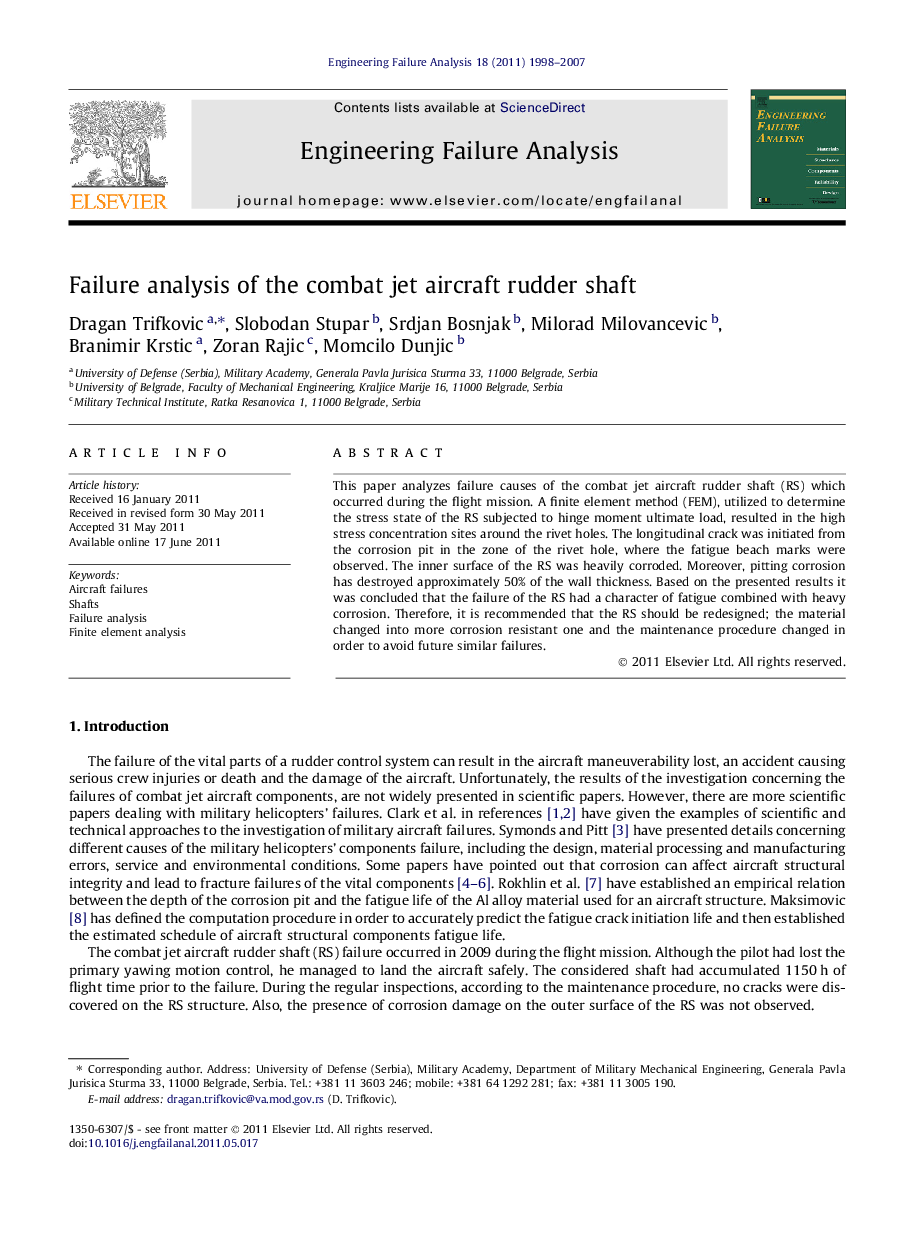| Article ID | Journal | Published Year | Pages | File Type |
|---|---|---|---|---|
| 768966 | Engineering Failure Analysis | 2007 | 10 Pages |
This paper analyzes failure causes of the combat jet aircraft rudder shaft (RS) which occurred during the flight mission. A finite element method (FEM), utilized to determine the stress state of the RS subjected to hinge moment ultimate load, resulted in the high stress concentration sites around the rivet holes. The longitudinal crack was initiated from the corrosion pit in the zone of the rivet hole, where the fatigue beach marks were observed. The inner surface of the RS was heavily corroded. Moreover, pitting corrosion has destroyed approximately 50% of the wall thickness. Based on the presented results it was concluded that the failure of the RS had a character of fatigue combined with heavy corrosion. Therefore, it is recommended that the RS should be redesigned; the material changed into more corrosion resistant one and the maintenance procedure changed in order to avoid future similar failures.
► The rudder shaft of the jet fighter failed due to fatigue and pitting corrosion. ► The longitudinal crack initiated from the corrosion pit near the rivet hole. ► The rivet holes and corrosion pits acted as stress concentration sites. ► The mechanism of the final transverse fracture is overload.
